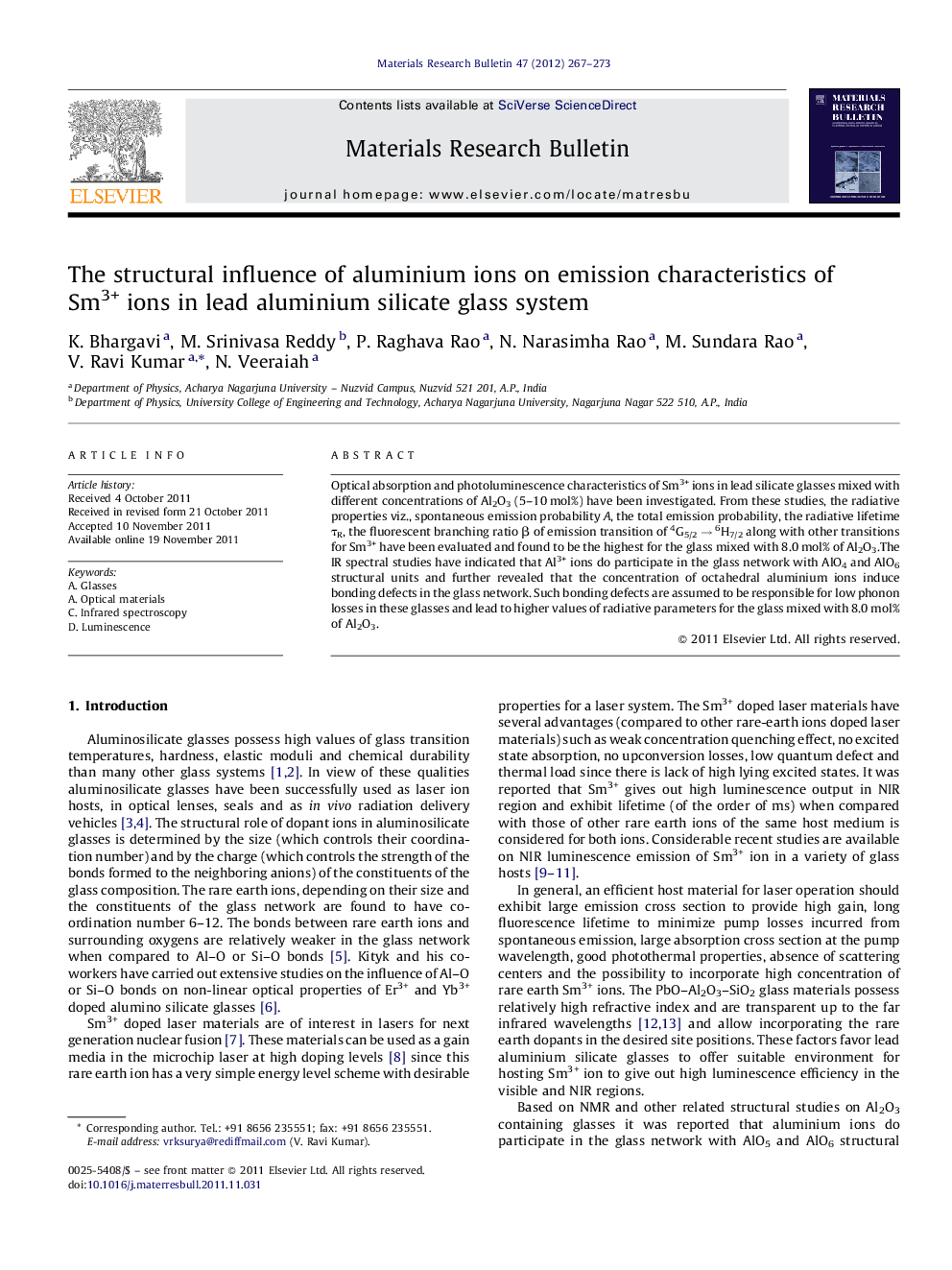| کد مقاله | کد نشریه | سال انتشار | مقاله انگلیسی | نسخه تمام متن |
|---|---|---|---|---|
| 1490617 | 992329 | 2012 | 7 صفحه PDF | دانلود رایگان |

Optical absorption and photoluminescence characteristics of Sm3+ ions in lead silicate glasses mixed with different concentrations of Al2O3 (5–10 mol%) have been investigated. From these studies, the radiative properties viz., spontaneous emission probability A, the total emission probability, the radiative lifetime τR, the fluorescent branching ratio β of emission transition of 4G5/2 → 6H7/2 along with other transitions for Sm3+ have been evaluated and found to be the highest for the glass mixed with 8.0 mol% of Al2O3.The IR spectral studies have indicated that Al3+ ions do participate in the glass network with AlO4 and AlO6 structural units and further revealed that the concentration of octahedral aluminium ions induce bonding defects in the glass network. Such bonding defects are assumed to be responsible for low phonon losses in these glasses and lead to higher values of radiative parameters for the glass mixed with 8.0 mol% of Al2O3.
The optical absorption and photoluminescence spectra of Sm ions in PbO–Al2O3–SiO2 glasses mixed with different concentrations of Al2O3 have been investigated. From these spectra, the emission probabilities and also fluorescence lifetime principal transition viz., 4G5/2 → 6H7/2 of Sm3+ ions of has been evaluated. The analysis of results of these studies has indicated that there is a less radiative trapping and enhanced fluorescence lifetime and high quantum efficiency in the glasses mixed with 8.0 mol% of Al2O3.Figure optionsDownload as PowerPoint slideHighlights
► Glasses of the composition (40 − x)PbO–(5 + x)Al2O3–54SiO2:1.0Sm2O3 with x = 5–10 mol% were prepared.
► Spectroscopic properties (OA, PL and IR) were investigated.
► Emission probability, lifetime, branching ratio of 4G5/2 → 6H7/2 transition of Sm3+ have been evaluated.
► Analysis of the results indicated that glass mixed with 8.0 mol% exhibits high luminescence efficiency.
Journal: Materials Research Bulletin - Volume 47, Issue 2, February 2012, Pages 267–273